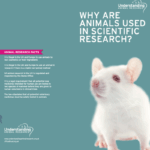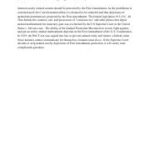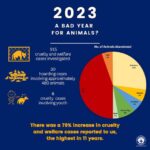Animal cruelty is a pervasive ailment that plagues societies around the world. It is not merely an emotional outrage; it encompasses legal, ethical, and spiritual dimensions that profoundly affect both human and animal lives. Understanding why animal cruelty is unequivocally wrong requires an exploration of these three interconnected realms.
Legal Perspectives on Animal Cruelty
Legally, animal cruelty is recognized as a violation of animal welfare laws in many jurisdictions. These statutes vary widely, but they fundamentally aim to protect animals from unnecessary suffering and harm. For instance, the Animal Welfare Act in the United States delineates laws that prevent cruel practices such as neglect, abandonment, and malicious infliction of pain. Such regulations not only codify the humane treatment of animals but also serve to educate the public on acceptable standards of treatment.
Despite existing laws, enforcement remains inconsistent. Many instances of animal cruelty go unreported or unpunished, revealing a systemic failure to prioritize animal rights within legal frameworks. This discrepancy hints at a deeper cultural issue: the trivialization of animal suffering as compared to human interests. Recognizing animal cruelty as an affront to the law engenders a call to action among citizens and lawmakers alike. Comprehensive reforms are needed to ensure rigorous enforcement of existing laws and the introduction of new legislation that more effectively protects animals.
Ethical Arguments Against Animal Cruelty
Ethically, the issue of animal cruelty elicits passionate discourse rooted in various philosophical frameworks. Many ethicists argue that sentient beings—those capable of experiencing pleasure and pain—deserve moral consideration. This ethical standpoint posits that animals possess intrinsic value, irrespective of their utility to humanity. Thus, causing them harm is not merely a legal issue; it is fundamentally an ethical violation.
The utilitarian perspective, championed by philosophers like Jeremy Bentham, emphasizes the greatest good for the greatest number. From this viewpoint, alleviating animal suffering aligns with the broader moral imperative to minimize pain across all sentient beings. Conversely, those who commodify animals—using them for food, entertainment, or experimentation—often face ethical scrutiny. The humane treatment of animals should be placed alongside other ethical considerations, such as environmental sustainability and human health.
Moreover, the rights-based approach, closely associated with the work of figures like Tom Regan, argues that animals have inherent rights simply by virtue of being alive. This perspective challenges the anthropocentric worldview that places human interests above those of other species. The ethical implications of this viewpoint are staggering—if we accept that animals have rights, our societal structures must undergo profound transformations to accommodate their inherent dignity.
Spiritual Dimensions of Animal Cruelty
At a spiritual level, the issues surrounding animal cruelty delve into our interconnectedness with the natural world. Many spiritual traditions advocate for compassion, and the mistreatment of animals is a violation of these principles. For example, various religious doctrines emphasize stewardship over domination, directing followers to treat all living beings with kindness and respect.
In traditions such as Buddhism, ahimsa, or non-violence, underscores the importance of minimizing harm to all sentient beings. This spiritual ethos encourages individuals to cultivate empathy, thereby fostering connections that extend beyond mere human interaction. By ensuring compassionate treatment of animals, we acknowledge their role in a larger web of life and affirm our responsibility to protect and honor them.
Furthermore, spiritual inquiry often leads to reflections on the cycle of life and death. Acknowledging the dignity of animal life can enhance our understanding of our own existence and mortality. Recognizing their sentience invites one to explore deeper philosophical questions about the nature of life itself, cultivating a more holistic worldview that values all forms of life.
Bridging the Gap: Legal, Ethical, and Spiritual Approaches
These three perspectives—legal, ethical, and spiritual—are not discrete; rather, they interweave to inform a comprehensive stance against animal cruelty. A robust legal framework can substantiate ethical arguments and reinforce spiritual values, creating a more cohesive societal attitude toward animal welfare.
For instance, when legal standards reflect ethical considerations, they lend legitimacy to activism and advocacy efforts. It is not enough to solely enforce laws; there must be a cultural acknowledgment of the ethical implications surrounding animal treatment. This recognition can catalyze changes in both individual behavior and institutional policies.
Educational initiatives can play an essential role in bridging these concepts. By fostering awareness about animal rights and welfare, we can cultivate a culture that values compassion and responsibility. Whether through school programs, community outreach, or social media campaigns, education serves as a powerful tool to instigate change and galvanize collective action.
Conclusion
In conclusion, the case against animal cruelty is compelling and multifaceted, rooted in legal, ethical, and spiritual foundations. Recognizing the intrinsic value of animals—legally, ethically, and spiritually—engages communities in meaningful discourse and action. It is essential that discussions regarding animal treatment progress beyond abstract principles, embodying a commitment to fostering a compassionate society where animals are afforded the dignity and respect they deserve. As stewards of this planet, humanity bears the moral obligation to advocate for those who cannot speak for themselves, thus ensuring that animals are treated not only as resources but as fellow inhabitants of this shared world.







